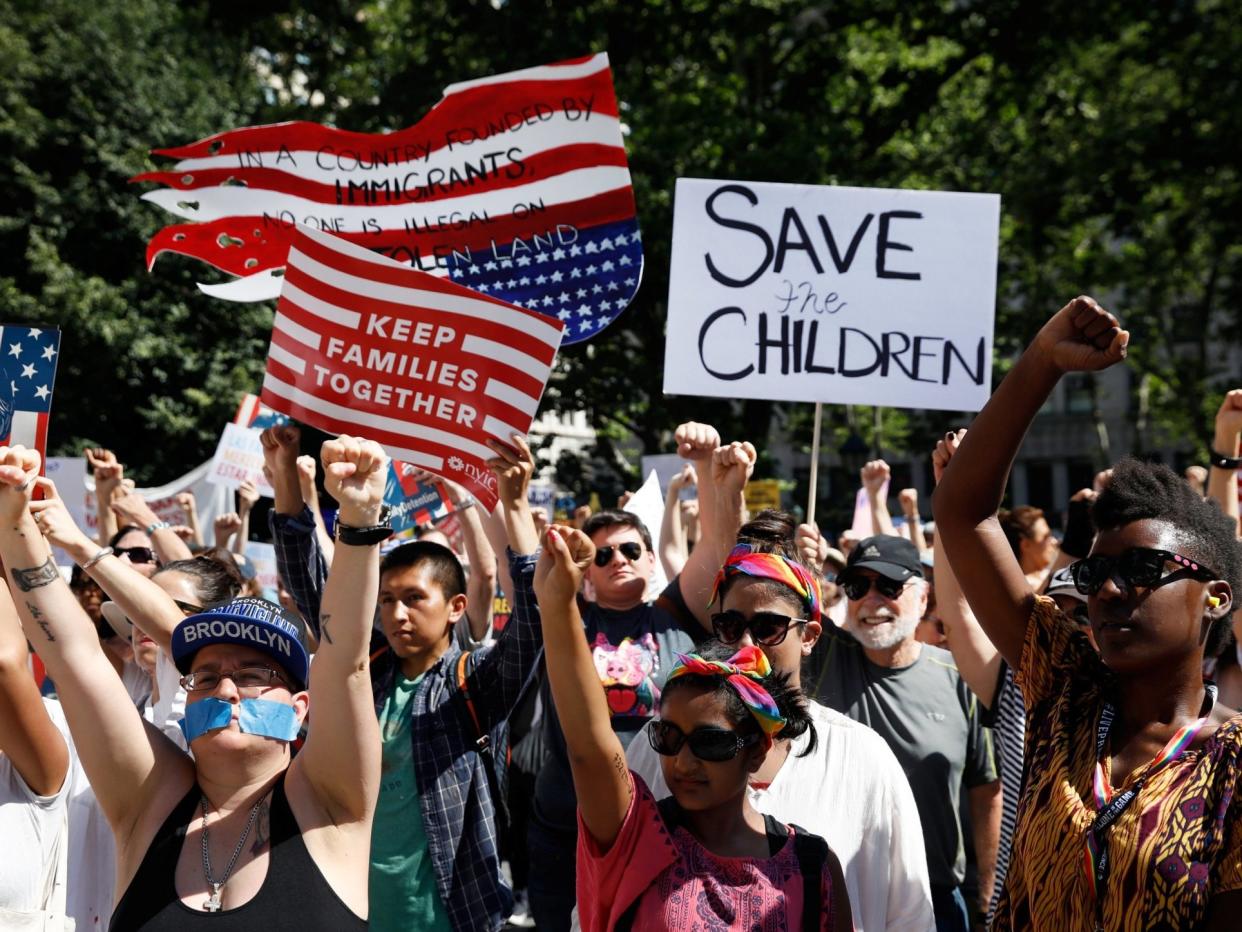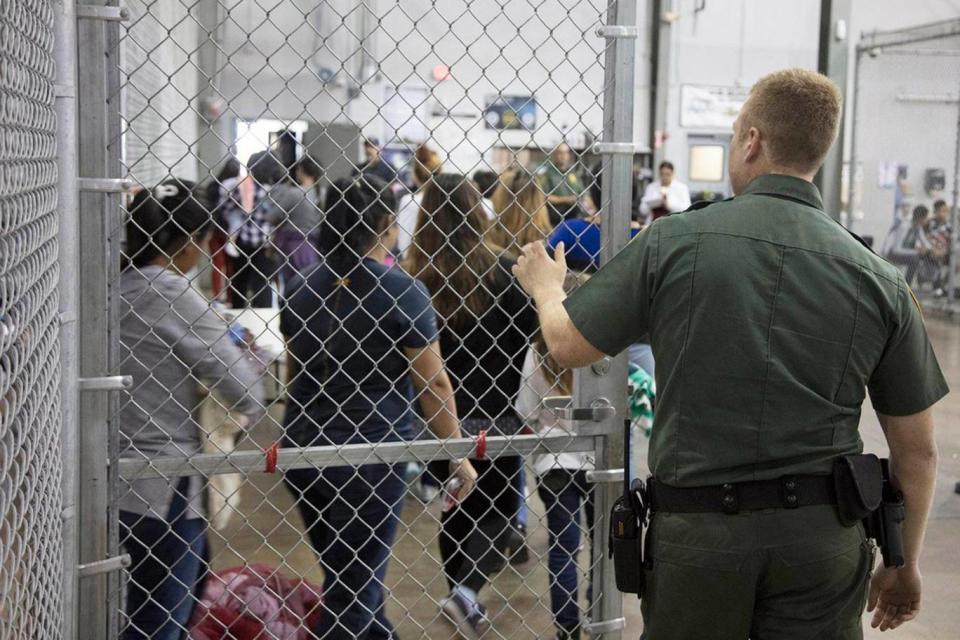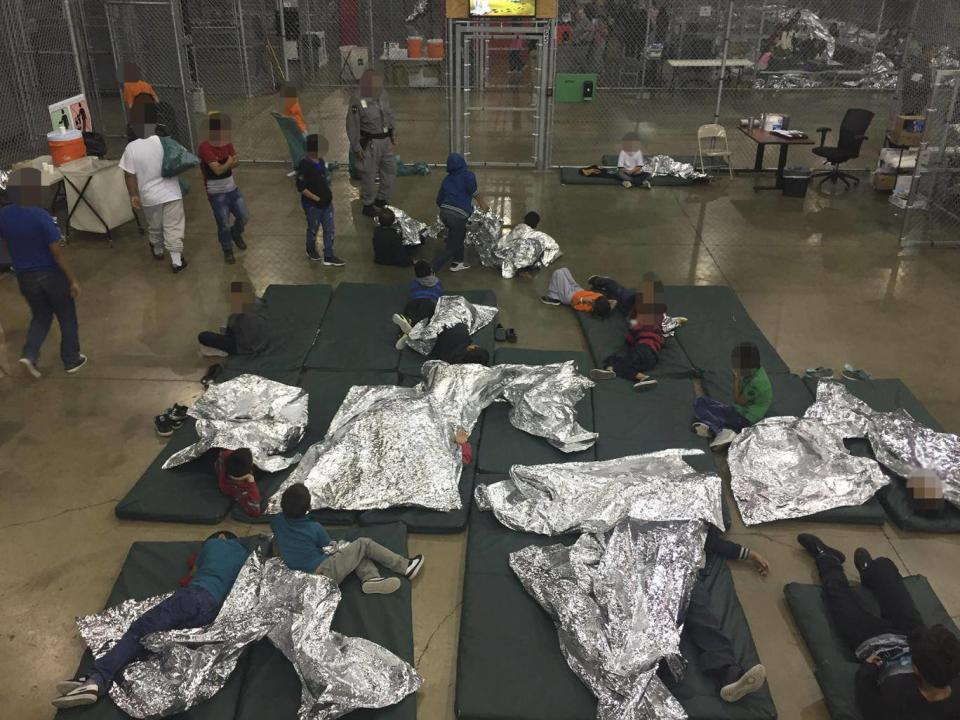Inside the classes where people are learning how to overthrow Trump's family-splitting immigration policy

After finishing work in the middle of the week, some 150 people squeeze into small Manhattan offices. Chairs are limited, it’s been raining, it’s dinnertime. But everyone here is on a desperate mission: they want to find a way to abolish ICE and overturn Donald Trump’s immigration policy.
The attendees are looking for ways to respond directly to what they see as a crisis caused by ICE, or the US Immigration and Customs Enforcement. The federal agency has been weighing heavily on the national conversation this past month, particularly following revelations over the Trump administration’s “zero tolerance” immigration policy, which has caused widespread outrage at the separation of families at the border.
The people here have come to a “non-violent direct action training”. This kind of protest can take many forms but is nearly always intentionally disruptive and can lead to arrest, even though the training stresses non-violence.
A young woman named LJ Amsterdam, the director of development and special projects for the Ruckus Society, a social movement-building organisation, stands at the front of the room and yells out questions to which the room can freely respond.
“Why did you decide to come today?” she asks the captive room.
“Worry for my friends,” one responds.
“I’m directly affected,” says another, referencing the president’s immigration policy.
“I want to do more,” another calls back.
This feeling of wanting to do more is something the room can all understand. People “hmm” quietly and snap their fingers in agreement.
“I’m a first generation person in the United States, my family immigrated here and they went through a lot getting here,” says Naz Seenauth, 23, from Queens.
It is clear to see how this situation is deeply personal for him. “I have a lot of friends who are undocumented and I work with a lot of asylum seekers, so it’s a topic that’s very important to me.”
Just a week before, an audio recording of a little girl begging to be released from a detention centre spread like wildfire, causing outcry. “It’s just too hard to hear that,” I overhear someone say.
Bridget Shanahan, 38, lives in the Bronx. She’s in graduate school for community organising, but wants to feel more prepared.
“I feel like everything that’s happening right now with this administration, especially this week has been pretty heavy,” she says. “We need to be educated and ready.”
“What we’re doing in these trainings is resistance calisthenics,” LJ says. “We are getting stronger, more coordinated. We are building muscle memory of what it feels like to be free. We’re practising street safety skills, situational awareness, de-escalation, and tight, efficient group movement.”

For the first training exercise, people pair off into roleplay scenarios. One person pretends to wear a Black Lives Matter T-shirt, and the other is meant to be bearing a confederate flag.
Pairs are instructed to act out what might be interpreted as a rough simulation of the ideological conflicts that have broadly arisen between left and right in the United States: “Imagine you are at a gas station, or a stop somewhere, wearing a Black Lives Matter T-shirt and a guy with a confederate T-shirt starts being aggressive with you.”
LJ says that there is not a single set of answers for how to respond, but that “we need to think about de-escalation in daily life” as a jumping-off point to begin as an activist – “not just actions”.
“If I’m in that situation I want to diffuse it as quickly as possible, not have a debate, not change the other person’s mind,” she explains. She adds that “this is about management and safety”, and that de-escalation “is conflict management, not conflict resolution”.
People from all ages and backgrounds have come to this training.
Sam Natale, 29, lives in Harlem but came straight from his job where he works as a public defender.
“I’ve been realising that being able to fight for my clients the traditional way is not going to change anything,” he says. “If we’re going to change the system we need to do it in the streets. And I couldn’t continue to go to work every day and just bang my head against the wall without having some hope that we’re going to change things.”
Sam says he is hoping to learn how to strategise – to take risks that will have an immediate and tangible impact, like stopping deportations. He tells me that direct actions “take the invisible and make it visible”.
The risks have not escaped him – that the tactics that will be taught this evening often end in arrests, or at least carry that possibility.
“Lots of people ask me if direct action is all about getting arrested. We have seen acts of civil disobedience – intentionally breaking the law in order to highlight the injustice of that very law… move hearts and minds and change policy,” says LJ.
“I wouldn’t say direct action is about getting arrested. I’d say direct action is about acting with a moral righteousness that transcends the law.”
Soon we begin training what everyone seems to have come for: blockades. A blockade, we are told, can be used in a number of examples of civil disobedience. Maybe they are used to shut down a highway that ICE is using to deport people. In Portland recently, activists shut down an ICE processing centre by blockading the entrance.
“Who has done blockades before?” LJ asks the room.
About a dozen people raise their hands. Five people are asked to come forward and demonstrate how they did their blockade. One girl hesitates to demonstrate, and LJ asks how her blockade went when she tried it before. She laughs: “Spoiler alert: it wasn’t super effective.”
The girl locks arms, standing side by side. LJ asks if everyone is OK with being touched, and shows how easy it is to push, shove or otherwise disrupt this block.
“See how easy it is to move this?” LJ asks. The room nods in agreement. “How might we make this stronger?”

The group sits down, crossing their legs. This is better, but still could use some improvement. “Has anyone heard of a caterpillar blockade before?” LJ asks. She instructs the demonstrators to move their legs around each other, wrapping them along each others sides as if they’re forming a chain hugging each other from the back.
Soft “Nos” fill the room, and eyes widen – no one’s seen this before. Everyone seems excited to learn something new.
Everyone gets a turn to practice.
Hector Martinez, 27, works in the nearby Manhattan neighbourhood of Chelsea. He says he came because he hopes to stand up for the immigrant community and says that coming here is an opportunity “to support each other beyond a Facebook post”.
The chance to put one’s body on the line is important for others too.
Francesca Villa, 30, says: “I’m very white, I’m wearing Keds, I’ve never had an interaction that’s been based on my race. I might as well be someone who can be an ally for those people who have those interactions every day.”
Asked what she hopes people will take away from her training, LJ says she wants people to have “tools for keeping themselves grounded when stuff pops off, tactics for keeping their friends safe, and methods for mobilising people quickly into formations that can prevent people from being deported”.
“I hope people leave having experienced what it feels like to use your body to be free.”

